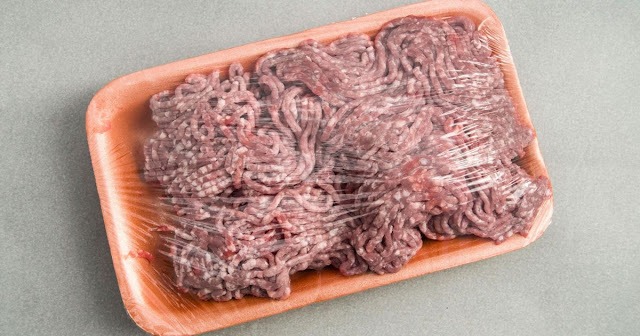ADVERTISEMENT
### **The Importance of Ground Beef in Our Diet**
Before we dive into the details of meat color and safety, it’s important to understand why ground beef is such a popular and essential part of many people’s diets. Ground beef is an incredibly versatile ingredient that’s used in a wide variety of dishes—from burgers and meatballs to spaghetti Bolognese and tacos. Its rich flavor, high protein content, and relatively low cost make it a go-to choice for home cooks and restaurants alike.
Ground beef can be prepared in so many ways, and it serves as a key protein in countless recipes. It is also easy to find in grocery stores and is available in various fat percentages, allowing consumers to choose what suits their preferences. However, like all meats, ground beef is perishable, and its safety is paramount. This is where understanding how to assess its freshness becomes essential, especially when it comes to color changes, such as grayness.
### **Understanding Meat Color: Why Does Ground Beef Change Color?**
Ground beef gets its vibrant red color from a molecule called myoglobin, which is found in muscle tissue. Myoglobin is responsible for storing oxygen in the muscles and is similar to hemoglobin, which carries oxygen in the blood. When myoglobin is exposed to oxygen, it forms a compound called oxymyoglobin, which is bright red and gives ground beef its fresh appearance. This is why freshly ground beef looks bright red when it’s first exposed to air.
However, when meat is exposed to oxygen for a longer period of time or stored in conditions where oxygen isn’t available, the myoglobin can change. The longer ground beef sits without proper oxygen circulation, the more likely it is that the myoglobin will be reduced to a compound called metmyoglobin, which causes the meat to take on a brownish or grayish hue.
So, while the color change may be unsettling, it’s not always an indication that the meat is unsafe. The grayness is often simply due to a lack of oxygen or exposure to air over time. However, there are some important considerations you should keep in mind to determine whether the ground beef is still safe to eat.
### **What Does Gray Ground Beef Really Mean?**
The presence of gray in ground beef can be a sign of several different things, and it’s not always a cause for concern. Here are some of the most common reasons ground beef turns gray:
1. **Lack of Oxygen Exposure**: As we mentioned earlier, when meat is exposed to air, it forms a compound called oxymyoglobin, which makes it appear red. However, once the oxygen supply is reduced, such as when meat is vacuum-sealed or packed in plastic, myoglobin can turn into metmyoglobin, causing the meat to turn gray. This is perfectly normal and doesn’t necessarily mean the meat is spoiled.
2. **Storage Conditions**: If ground beef is stored improperly, such as in a refrigerator that’s too warm or left out at room temperature for an extended period, it can begin to lose its fresh color. The lack of proper cooling can also accelerate spoilage and bacterial growth, but a color change alone is not an immediate indicator of spoilage.
3. **Age of the Meat**: Ground beef that has been in your refrigerator for a few days may naturally turn gray, even if it is still safe to eat. The meat is aging and losing oxygen, which can result in the color change. However, this does not necessarily mean that it has gone bad.
4. **Preservatives and Additives**: Some ground beef products are treated with preservatives or additives that can alter the color. For example, some ground beef may be injected with carbon monoxide to maintain a red color for a longer period. While this can help prevent discoloration, it’s not always an indicator of freshness, and the meat could still be spoiled if it’s not stored properly.
5. **Meat Grinding Process**: In some cases, ground beef might turn gray due to the way it was processed. During the grinding process, the meat’s surface area increases, allowing for more exposure to air. If the meat is then packed in a way that prevents oxygen flow, it could start turning gray even though it’s perfectly safe to eat.
### **How to Tell If Gray Ground Beef Is Safe to Eat**
The color of ground beef is just one factor to consider when determining whether it’s safe to eat. To ensure the meat is still fresh, you’ll need to rely on additional sensory cues such as smell, texture, and overall appearance. Here’s how you can assess the safety of gray ground beef:
#### **1. Smell the Meat**
One of the most reliable ways to determine whether ground beef is safe to eat is by smelling it. Fresh ground beef should have a neutral or slightly meaty smell, but it should not have any foul, sour, or ammonia-like odors. If the meat smells unpleasant or off in any way, it’s best to discard it. A foul smell is a strong indicator of bacterial growth and spoilage, regardless of the color.
For Complete Cooking STEPS Please Head On Over To Next Page Or Open button (>) and don’t forget to SHARE with your Facebook friends
